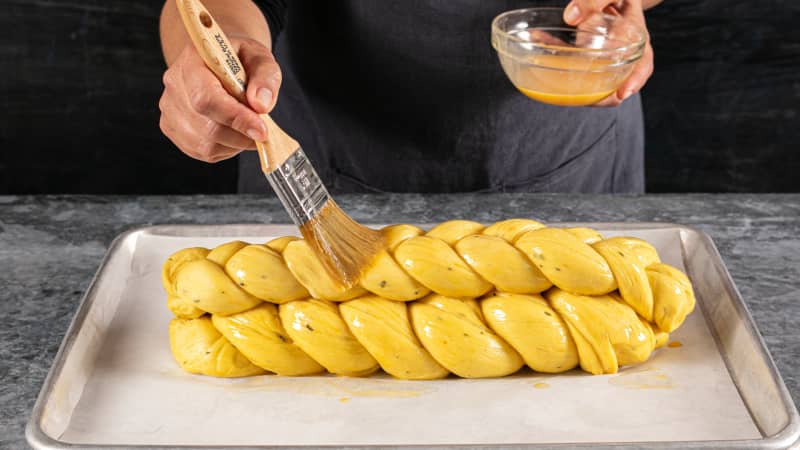Applying an egg wash is a quick and easy way to transform the finish of a baked good from lackluster to professional: As it bakes in the oven, the wash develops into a rich, golden-brown sheen. Here’s everything you need to know to ensure shiny, uniformly bronzed results.
How to Make Egg Wash
Published May 16, 2022.

What Is an Egg Wash?
In its simplest form, an egg wash is just a whole beaten egg that’s lightly brushed onto the top of a baked good before it goes into the oven to enhance its color and give it a sophisticated glossy finish.
Sign up for the Cook's Insider newsletter
The latest recipes, tips, and tricks, plus behind-the-scenes stories from the Cook's Illustrated team.
What Is an Egg Wash Used For?
An egg wash creates a bakery-quality finish on breads, rolls, pie crusts, and pastries. It’s nice to use an egg wash on pastries with intricate details as it highlights any designs or complex latticework. An egg wash can also be used as an adhesive to seal up edges for items such as fruit hand pies and turnovers.
Should I Add Water or Milk to Egg Wash?
An egg wash is commonly diluted with a little water or dairy to make it easier to apply a thin, even coating, but we usually skip this step since it can also make the egg too thin to effectively seal layers together.
Applying an Egg Wash to Bread
In the test kitchen, we usually prefer plainer washes like water and milk for sandwich bread and dinner rolls, and reserve egg washes for richer, egg-based breads like challah and brioche. Each of these washes enhances browning by triggering the Maillard reaction, in which carbohydrates and proteins recombine under heat to produce new flavor compounds (and deeper color). But each does it a different way for a slightly different finish.
- Water causes some of the starch on the surface of the dough to break down into glucose. Once the water evaporates, the glucose interacts with the flour proteins to create browning. Water will produce decent browning but little shine.
- Milk’s naturally occurring sugars work in conjunction with proteins from the flour. Milk will produce good browning and moderate shine.
- In an egg wash, the egg itself provides the proteins necessary for good browning, a moderately shiny, satiny finish; and a subtle egg taste.
How to Make Egg Wash



How to Clean Egg Wash From a Pastry Brush
1. To clean a natural bristle pastry brush, start by rinsing it briefly to remove debris.
2. Rub warm, soapy water into the bristles and rinse thoroughly.
3. Blot the brush with a towel and lay it flat to dry. (Replace the brush if it begins to smell.)



